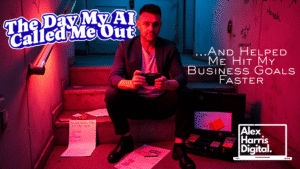Why Your Blog Isn’t Getting Noticed (And the Uncomfortable Truth About ‘Perfect’ Content)
Ever spent hours tweaking a blog post—polishing every sentence, hunting for the “right” image, second-guessing every headline—only for it to vanish into the digital void?
You’re not alone.
Here’s the uncomfortable truth:
Most ‘perfect’ blogs are invisible.
They’re safe. They’re polished. They’re forgettable.
But the blogs that get noticed?
They’re a bit messy, a bit bold, and a whole lot more human.
They’re a bit messy, a bit bold, and a whole lot more human.
What’s Actually Working? (July 2025, Real-World Proof)
If you’ve been watching the latest marketing news, you’ll have noticed a shift:
July 2025 Marketing News: Trends, Insights, and Shifts (Seafoam Media) highlights how brands are moving away from over-produced, ultra-slick content. What’s winning?
July 2025 Marketing News: Trends, Insights, and Shifts (Seafoam Media) highlights how brands are moving away from over-produced, ultra-slick content. What’s winning?
- Bite-sized, story-driven posts
- Quick, actionable tutorials
- Real-time experiments
- Human, slightly imperfect voices
It’s not about flawless grammar or pixel-perfect graphics. It’s about showing up, sharing something real, and inviting your readers in.
Step-by-Step: How to Create a Blog That Actually Gets Noticed
1. Start With a Messy Draft
Don’t overthink it. Dump your ideas out—bullet points, half-sentences, voice notes.
The magic happens in the edit, not the first draft.
The magic happens in the edit, not the first draft.
2. Tell a Real Story
What happened to you this week?
- Did you try something that didn’t work?
- Did you have a lightbulb moment?
- Did a client throw you a curveball?
Share it. Readers remember stories—not stats.
3. Teach One Thing, Step by Step
Pick a single, practical thing you know.
Break it down for your reader.
Break it down for your reader.
- “How I wrote a blog in 20 minutes using AI”
- “Three Instagram Reel hooks that actually work for me”
- “What I learned from posting daily for a month”
Make it actionable. Make it honest. No fluff.
4. Show Your Working-Out
Screenshots, scribbled notes, even a quick selfie of your workspace.People love to see behind the scenes.
Perfection is boring. The process is the story.
Perfection is boring. The process is the story.
5. Share What Didn’t Work
Be honest about the flops.
- That campaign that tanked?
- That blog post that got zero reads?
It’s all useful. Your readers are learning from your experiments, not just your wins.
6. Drop in Useful Links (Only the Good Stuff)
Don’t just fill space—share resources you actually use and love.
Here’s what’s on my list right now:
Here’s what’s on my list right now:
- AI Marketing in the Isle of Man: Your Secret Weapon
- Digital Sales Funnels and Email Marketing in 2025
- July 2025 Marketing News: Trends, Insights, and Shifts
7. Publish Before You’re Ready
Set a timer for 45 minutes. When it goes off, hit publish—no matter what. You can always tweak it later. Most people will never notice the imperfections.
8. Invite Conversation
End with a question or a challenge. “What’s the messiest blog you’ve ever published? Did it work?”
Encourage comments, DMs, or even reply emails. That’s how you build community.
Encourage comments, DMs, or even reply emails. That’s how you build community.
Why This Works
People—and search engines—are craving authenticity. Google’s July 2025 trend? Rewarding content that’s written for humans, not algorithms. Your audience wants to learn, laugh, and see the person behind the post. The messy, honest, slightly chaotic stuff?
That’s what gets noticed. That’s what gets shared.
That’s what gets noticed. That’s what gets shared.
Ready for a Challenge?
Write your next blog in under an hour.
Make it messy, make it real, and share one thing that didn’t go to plan.
Make it messy, make it real, and share one thing that didn’t go to plan.
Tag me or drop your link—I’ll read it!




